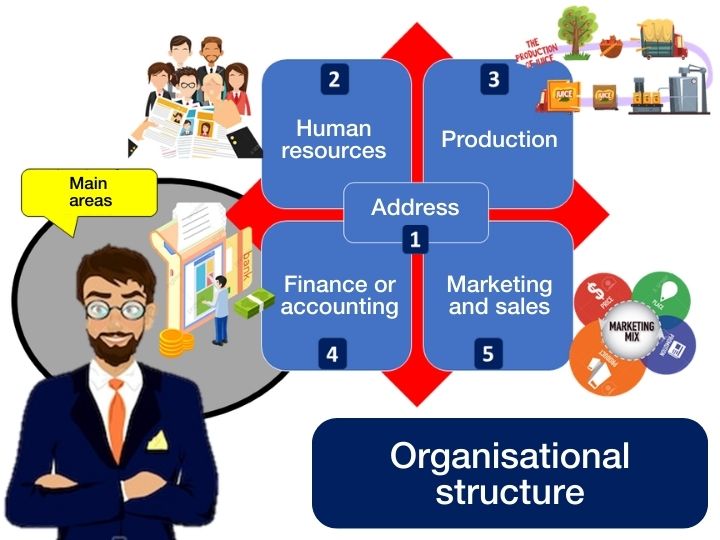Organizational structure
The organizational structure are all the departments into which a company is divided so that it can work efficiently.
It is important to consider that each area or department has specific functions. Since each one has a group of workers who carry out similar activities and respond to specific needs within the organisation, it is important to consider that each area or department has specific functions.
It is important to note that each department helps the company to achieve its objectives and goals. Generally, a company has at least five functional areas. These include management, human resources, production, finance and marketing.
Of course, as companies grow, so does their internal structure. That is to say, the number of departments that must operate in a coordinated manner to meet the organisation’s policies and objectives grows.
Main areas of the organizational structure
The main areas of the organizational structure are:
Address
Above all, the management area is related to the process of the overall operation of the company. This is where the objectives are defined, the most important decisions are made and all the operations of the organisation are directed from there. Since it is responsible for the smooth running of everything, it is directly related to and controls all other areas.
Human resources
The human resources area is in charge of the search, selection and recruitment processes of the personnel that the company needs to fill the jobs. In other words, it has to do with everything related to recruitment and remuneration of personnel.
In addition, it has to do with administrative tasks, internal communication, training and legal aspects of the staff in charge.
Production
Naturally, this area is where the production process of the goods and services sold by the company takes place. Specifically, it is the functional area where raw materials are transformed into finished products.
It is responsible for ensuring that optimum use is made of the resources in the production process. It also controls that what is produced meets the expected quality conditions. To this end, the best inputs must be selected in the required quantities and the best suppliers must be chosen.
Finance or accounting
However, finance is responsible for keeping the accounting records of all the operations carried out by the company. It is in charge of all the money movements that take place inside and outside the company. In other words, this area is responsible for the company’s monetary and financial resources.
He or she is in charge of paying employees and suppliers, and is responsible for financial reporting and accounts, not forgetting the payment of taxes. In addition, he/she makes investment decisions for the company, considering what to invest in and the best time to do so.
Marketing and sales
The functions of the marketing department, on the other hand, are oriented outside the company. In this area, the marketing strategies to be applied and the market or market segment to be targeted are defined.
Of course, this is done by planning and designing new products and establishing the life cycle of the products that the company markets. It seeks to achieve marketing objectives through effective communication and customer acquisition.
It is also responsible for planning the marketing mix in terms of product, price, communication and distribution. It does this based on the different goods and services that the company offers to the market.

Other areas that can work in larger companies
Depending on the size of the company, some companies have other departments such as the following:
● Innovation: This area is where new product ideas originate, as well as improvements in both production and marketing practices and processes.
● Technology: This department develops the hardware and software that provides the technical support to be used for data and information management. It helps production and marketing processes become more efficient.
● Customer service: Seeks to better attend and serve the company’s customers, in order to maintain customer loyalty. Giving rapid response to customer requirements such as claims, complaints, concerns, among others that we can mention.
To conclude, let us say that most companies have five functional areas such as management, human resources, production, finance and marketing. However, depending on the size of the company, other functional areas could be implemented to better respond to the particular needs of each organisation. The important thing is that each area works in a coordinated way to achieve the proposed objectives and goals.

